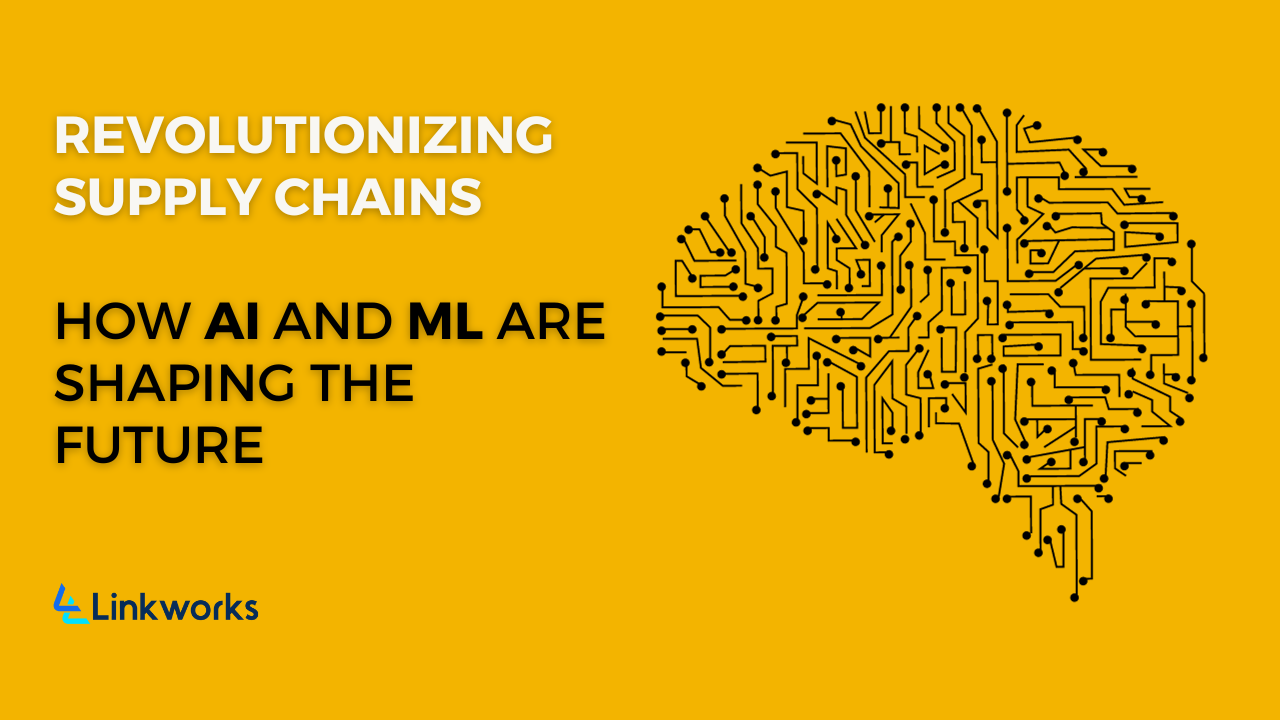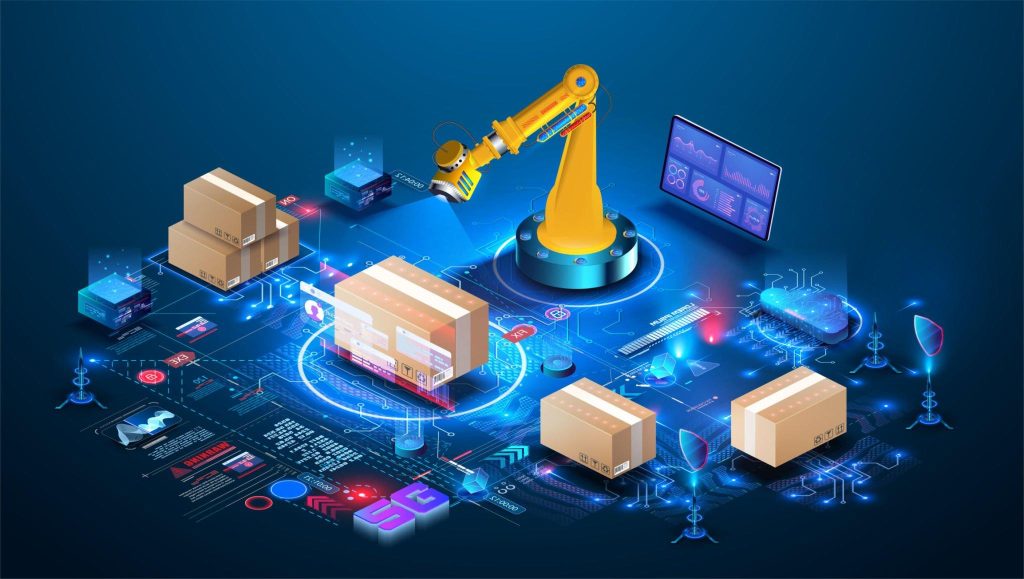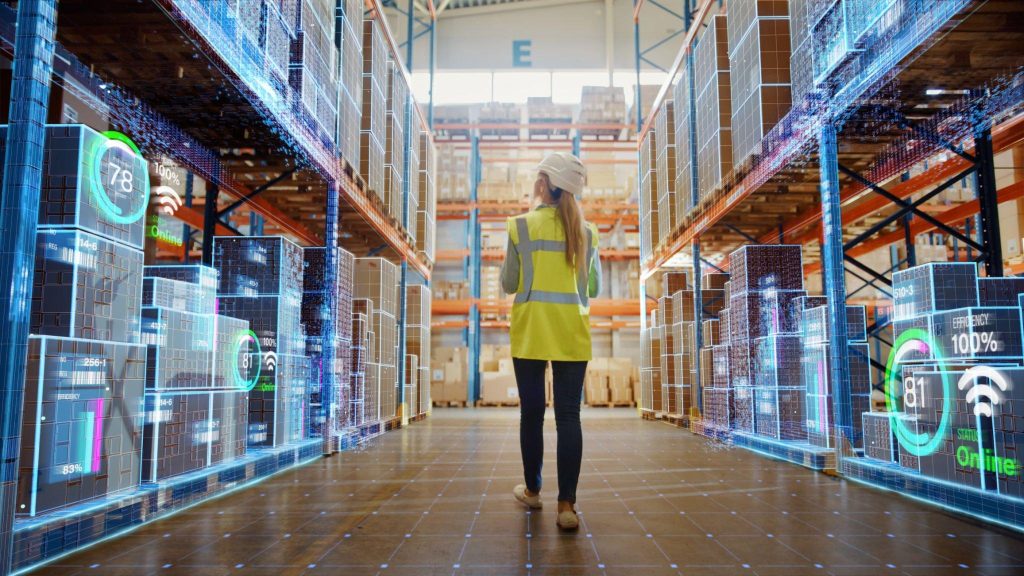Revolutionizing Supply Chains: How AI and ML are Shaping the Future

Introduction
Nowadays, we all get our essential gadgets via online; did you ever wonder how the products are delivered to your doorsteps?
There is a huge network behind that, which is Supply Chain Management.
Supply chains play a vital role in ensuring the smooth flow of goods and services from manufacturer to consumer. The supply chain is interconnected together with multiple functions, including logistics, production, procurement, and marketing and sales
However, traditional supply chains often face various Complications and ineffectiveness, which leads to a major revolution in this area. This is where the emergence of AI and ML comes into the playground.
By enabling automation, predictive analytics, and optimization, AI and ML technologies are revolutionizing a number of industries.
Today, in this blog, let’s delve into how AI and ML are reshaping supply chains and the future.
Understanding Supply Chain Challenges
In the traditional supply chain model, with its interconnected network of suppliers, manufacturers, distributors, and retailers, which often faces more complications and inconvenience. These challenges range from delays in information flow to a lack of visibility across the entire supply chain. Identifying these common challenges and bottlenecks is crucial for addressing them effectively.

Nowadays, Customer’s expectation meets speed, accuracy, and reliability in supply chain operations, why because everything changed digitally, if our services consume too much time to fulfil consumers’ needs, it creates a lack of interest in purchasing.
There are some uncertainties in Demand, Supplier, Lead Time, Technological, Regulatory, Supply Chain Disruptions, Inventory, Supply Chain Visibility, and so on so.
By leveraging AI and ML, businesses can accurately forecast demand patterns.
AI and ML offer the opportunity to enhance performance through predictive analytics and real-time insights. With these technologies, businesses can gain a competitive edge and improve their overall supply chain management capabilities.
The effective impact of AI and ML on Supply Chain Optimization
Let’s see how AI and ML are being effectively applied in supply chain Industries. They are predominately utilized in Predictive analytics, Route optimization, Warehouse management, Fraud detection, and Customer service.

How AI creates an impact on the supply chain:
How ML creates an impact on the supply chain:
Machine Learning algorithms continuously learn and improve over time. This technology holds significant potential for optimizing supply chains.
By applying ML algorithms to inventory management, transportation, and warehouse operations, businesses can enhance their efficiency and effectiveness. ML algorithms can help identify optimization opportunities and suggest improvements, leading to better resource allocation and cost savings.
AI-Powered Demand Forecasting
Before going to AI-powered demand forecasting, let’s see what is Demand Forecasting.
It is nothing but it’s about planning or predicting the demand for raw materials, products, or goods to make sure that you can deliver the right product with the right quantities to the appropriate individuals at the precise moment.
Traditional methods of demand forecasting often struggle with challenges such as seasonality, trends, and outliers. However, AI-powered demand forecasting overcomes these limitations by extracting insights from big data.
In today’s world, AI-driven analytics enable real-time demand sensing, providing businesses with up-to-date information on customer demands.
By promptly responding to demand fluctuations, businesses can ensure adequate stock levels and avoid costly stockouts or overstocking. This responsiveness enhances customer satisfaction while reducing unnecessary costs, ultimately driving overall organizational success.
AI-driven demand forecasting plays a crucial role in achieving optimized inventory levels. Maintaining optimal inventory levels improves efficiency, reduces carrying costs, and enhances profitability.
By leveraging AI algorithms, businesses can implement effective inventory control mechanisms and achieve the desired balance between risk and availability.
Inventory Optimization Techniques

Coming to inventory, it is a crucial playground to score, effective inventory management has to meet customer demand, reduce costs, and ensure the efficient operation of the supply chain.
Dynamic pricing and promotions based on AI are powerful inventory optimization techniques. By adjusting prices in real-time according to demand and market conditions, businesses can optimize revenue and improve inventory turnover.
Additionally, AI enables intelligent allocation of inventory, balancing risk and availability across multiple locations or channels. These techniques contribute to enhanced efficiency and cost-effectiveness in inventory management.
Intelligent Transportation and Logistics

What AI can’t do!!
AI provides the ability to optimize transportation routes. By considering various factors such as real-time traffic conditions, weather, and historical data, AI can identify the most efficient routes for transportation.
Real-time tracking, monitoring, and adjusting further enhance transportation operations. By reducing transportation costs and enhancing speed, businesses can improve overall supply chain performance.
Talent Management and Workforce Optimization
AI can be employed in demand-based workforce planning, optimizing labor capacity, and skill requirements.
By analyzing data on past performance, market trends, and business forecasts, businesses can determine the appropriate workforce size and skill sets required. This leads to better resource allocation, improved workload balance, and increased employee productivity.
AI-driven workforce planning ensures that the right people are in the right place at the right time.
Conclusion
Here we are in the final phase of this blog.
AI and ML have the transformative potential to revolutionize supply chains. By leveraging these technologies, businesses can optimize operations, improve efficiency, and remain competitive in today’s fast-paced environment.
The key benefits and opportunities presented by AI adoption include enhanced visibility, improved forecasting accuracy, optimized inventory management, efficient transportation, and proactive risk mitigation.
The future of supply chains, shaped by AI and ML, promises increased efficiency, reduced costs, and improved customer satisfaction.
Mail me, if in case any queries strike it out, and I will be happy to reply to you!!!
